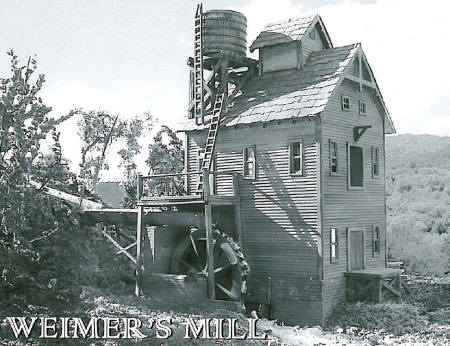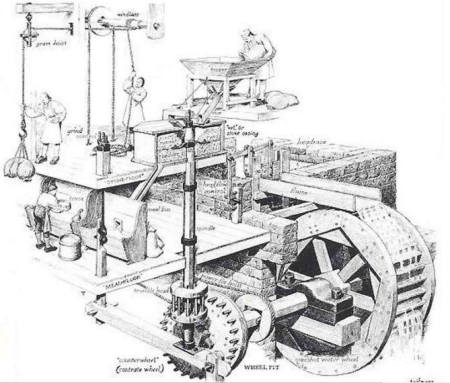|
Kitbashing N Scale Laser Kit |
||||||||||
|
| |
That’s how the Weimer’s Grist Mill project began.

I purchased the Branchline Trains Laser Art kit version of this mill and started to research grist mills while waiting for it to arrive. I’ve lived around grist mills most of my life yet I actually knew very little about them.
After all, grist mills were vital to the development of this nation and you will find them in one state of repair or another in almost every part of the country. Without them our ancestorss would not have had much to eat and nothing to feed their livestock. Since almost every family sooner or later had to visit one of these mills, they became centers of nutritional undeertaking.
Grist mills became the hub of many social activities where families exchanged news and rubberd elbows.
Grist is the grain that has been ground or is in the process. It may or may not be bolted (sifted) into flour for bread making usually wheat, or corn for livestock feed and cornbread.
Grist mills in New England served a wide range of needs.How does a grist mill work?
Throughout my research I became intrigued with the idea of how a grist mill worked and learned it was one of the most efficient systems we ever came up with to produce food.
The number of mechanical activities conducted from one revolution of the water wheel and very little effort by the miller was remarkable.

It turned the “runner” millstone to do the grinding, it shook the shaker to keep the grain moving, it provided the sifting motion to sort the product, the conveyor to provide transit from the wheat sink and elevators to the “smutter” that cleans away fungus and other impurities.
All are driven by the water wheel’s energy.
Through my research, I knew what I wanted to add to the model—I would scratch build the interior detail and leave the front wall ajar so it could be lifed away to display the two interior floors and the hardware and gears they house.
I can’t wait to get started, but it looks like it will be a couple of days.
Yes, I do intend to write about this build as “Trials and Tribulations of Building Weimer’s Mill in N-Scale”.
| Grist Mill Buildtorial | |
| Step One | Modeling Interior |
| Junk Box Details | Duplicating Sub-Assemblies |
| Mill Modeling Resources | |



